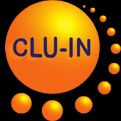Phytotechnology Project Profiles
Phytoremediation at a Former Uranium Mining Site Test Field in Germany
Last Updated: 11/16/12 |
||
| Site Information | ||
| Site Name, Location: | Former Uranium Mining Site Test Field, Ronneburg, Eastern Thuringia, Germany | |
| Site Type: | Uranium Mining | |
| Is this a Federal Superfund Site? |
No | |
| Is this a Federal or Military Site? |
No | |
Project Information |
|||||||||||||||||
| Project Name: | Phytoremediation at a Former Uranium Mining Site Test Field in Germany | ||||||||||||||||
| Site History and Background: | Phytoremediation is currently being conducted at a site in the former uranium mining area of Ronneburg in Eastern Thuringia, Germany. The site is contaminated with low levels of heavy metals and radionuclides (HM/R). Phytostabilization and phytoextraction techniques are being implemented to minimize HM/R-accumulation in soil and reduce groundwater contamination. Reduction in the rate of water seepage and load are being demonstrated through Lysimeter experiments. Remediation of the site includes an investigation and concept development to support the use of the contaminated plant residues resulting from the phytoremediation effort. Final use of the HM/R-loaded plant residues (after harvest) was investigated through (1) biogas and ethanolic fermentations and (2) combustion of the materials. The materials’ contributions to waste minimization, energy generation, and material recycling were evaluated. The Friedrich Schiller University of Jena and the Technical University of Dresden are to perform these activities cooperatively at sites to develop approaches to support the use of HM/R-residues. | ||||||||||||||||
| Scale: | Pilot/Field Demonstration | ||||||||||||||||
| Project Status: | Ongoing | ||||||||||||||||
| Media Treated: |
| ||||||||||||||||
| Contaminants Treated: |
| ||||||||||||||||
| Phytotechnology Mechanism(s): | Phytoextraction Phytostabilization |
||||||||||||||||
| Plants and other Vegetation Used: | Indian Mustard Sunflower Triticale |
||||||||||||||||
| Planting Description: | Ten plots with 2 meter (m) x 2 m x 1m were installed. One plot contained no plants, while the other nine plots contained three different soil additives and were planted with identical plant mixtures. The three different soil additives used included: 1. Test field soil (homogenized substrate), (TF) 2. Test field soil with mycorrhiza (Glomus intraradices) and a bacteria culture containing the strains Streptomyces tendae F4 and S. acidiscabies E13, (TF + MS) 3. Test field soil with 10 kg/square meter calcareous topsoil, (MIX) Additionally, all plots were fertilized with 100 kilograms (kg) nitrogen-phosphorous-potassium/ hectare (NPK/ha). | ||||||||||||||||
| Planting Area: | Ten 2 m x 2 m x 1 m plots meters | ||||||||||||||||
| Performance Data: | The mobility of HM/R was shown to vary with soil chemistry. The biomass yield of various plant species greatly impacts the extraction yield. Lysimeter experiments results indicate the following: 1) further reduction of the water seepage rate with soil amendments, and 2) a reduction in the water seepage load. Experiments regarding the use of the harvested biomass include: 1) the fermentation of Triticale from the test field site is feasible and economical, and 2) there is no inhibition of fermentation, and there is still a full consumption of nutrients associated with low HM/R concentrations. This study has concluded that phytoremediation is a feasible method for the remediation of a site with low levels of HM/R contamination. Triticale was suitable for the specific test site’s conditions. Triticale use resulted in good extraction rates. The effectiveness of phytoremediation decreases with seepage water rate and load. The study showed that is feasible to use Triticale and Solanum tuberosum for phytoremediation. Based on these results, the following should be further investigated: 1) effects of different amendments for higher biomass yields, 2) mass balance of HM transport and fate, 3) utilization experiments with plants and fate of HM/R. | Point(s) of Contact |
|||||||||||||||
|
Daniel Mirgorodsky Institute of Geosciences, Friedrich Schiller University Burgweg 11 Jena, Germany E-mail: georg.buchel@uni-jena.de |
|||||||||||||||||
| Information Source(s): | Mirgorodsky, Daniel, D. Ollivier, D. Merten, G. Bochel, H. Bergman, S. Willscher, L. Jablonski, J. Wittig, P. Werner, (2011). The New Uranium Mining Boom: Challenges and Lessons Learned. Springer Geology, ISBN: 978-3-642-22121-7, Part 3, p 433-442, 2011. http://www.imwa.info/docs/imwa_2010/IMWA2010_09_10_willscher_s.pdf |
||||||||||||||||
| | |||||||||||||||||




